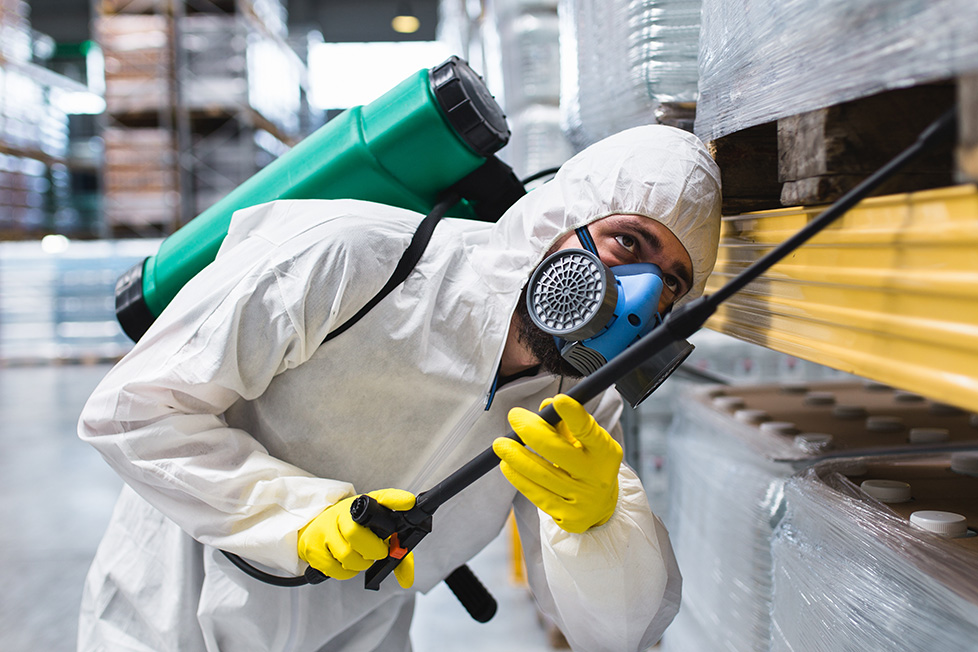Pest Control solutions covering residential and commercial properties.
Eco-Friendly Insect Control Approaches for Taking Care Of Wildlife in Urban Areas
Urban areas typically find themselves at the crossway of human activity and wild animals, bring about distinct obstacles in insect monitoring. Environmentally friendly methods highlight sustainable coexistence, using techniques such as habitat alteration and natural repellents to mitigate human-wildlife disputes. These strategies not just secure the environment however additionally boost neighborhood interaction in wildlife administration. As metropolitan populaces proceed to expand, recognizing the dynamics of wild animals interactions ends up being significantly important. What cutting-edge approaches can be carried out to make sure both eco-friendly balance and metropolitan safety? Exploring this concern discloses an engaging landscape of prospective remedies.
Recognizing Urban Wild Animals Dynamics
Comprehending Urban Wildlife Dynamics is crucial for establishing effective and green bug control methods. Urban locations are significantly ending up being habitats for different wild animals varieties, driven by elements such as habitat fragmentation, food accessibility, and human infringement. Recognizing these dynamics enables a nuanced strategy to pest administration that lines up with ecological concepts.
Urban wild animals usually consists of types such as raccoons, squirrels, and birds, which adjust to city environments, discovering specific niches in eco-friendly spaces, parks, and also houses. Their visibility can cause problems with humans, specifically when they make use of human sources for food and shelter. Recognizing the actions and eco-friendly functions of these varieties notifies methods that reduce negative communications while promoting biodiversity.
Moreover, recognizing the interdependencies within city ecosystems helps in recognizing essential areas for habitat conservation and remediation. This understanding adds to the growth of integrated pest monitoring (IPM) methods that think about the ecological balance, thus reducing reliance on damaging chemicals. By fostering coexistence in between people and urban wild animals, cities can create much healthier atmospheres that benefit both citizens and neighborhood ecological communities, leading the way for sustainable urban living.
Natural Repellents and Deterrents
Natural repellents and deterrents offer a lasting option to standard parasite control methods by taking advantage of the power of nature to keep undesirable types at bay. These eco-friendly remedies usually make use of plant-based components, necessary oils, and various other naturally happening substances that hinder bugs without harming the setting.
One effective natural repellent is peppermint oil, which is understood to drive away rodents and insects. Its solid scent is unpleasant to lots of insects, making it a prominent choice for city settings. Vinegar and citrus peels can serve as deterrents, as their strong odors are usually uninviting to various wild animals.
Furthermore, diatomaceous planet is a natural powder that can be spread in areas vulnerable to parasite activity, successfully drying out and preventing pests without presenting dangers to non-target types. In addition, garlic sprays and neem oil are recognized for their capacity to ward off a large range of parasites, including both insects and bigger wild animals.
Implementing these natural repellents not just lowers dependence on chemical pesticides yet additionally advertises a much healthier city ecological community, fostering a more well balanced coexistence in between humans and wildlife. By making use of these methods, urban areas can successfully take care of pest populations while lessening environmental impact.
Habitat Adjustment Methods
Reliable environment modification strategies play a critical duty in lasting insect administration by changing the atmosphere to make it less helpful to pest infestations. By understanding the ecological dynamics of metropolitan areas, building owners can execute critical adjustments that prevent bugs while advertising biodiversity.
(Pest Control PortCharlotte)One main technique involves keeping correct hygiene. This includes routine waste removal, safeguarding trash can, and removing standing water to reduce breeding websites for bugs and rodents. Additionally, landscaping practices such as picking indigenous plants can enhance environmental equilibrium, offering habitats for helpful microorganisms while lessening sources for parasites.
Another crucial strategy is to seal access points in structures. Evaluating and repairing splits in foundations, walls, and home windows can substantially lower bug gain access to. Creating physical obstacles, such as fencings or plant buffers, can hinder wild animals motion into human-inhabited areas.
Integrated Bug Monitoring Practices
Structure upon habitat alteration strategies, integrated pest management (IPM) techniques offer an alternative approach to controlling parasite populaces while reducing ecological influence. IPM combines different strategies, consisting of organic, social, mechanical, and chemical controls, to accomplish effective bug monitoring.
Biological control entails the introduction of all-natural predators or parasites to minimize insect populaces. Cultural techniques, such as crop rotation and sanitation, interrupt pest life process and lessen their habitats - Pest control service. Mechanical controls, like catches and obstacles, provide instant alleviation from insect pressures without chemical treatment
Chemical controls are utilized as a last option, concentrating on targeted applications that restrict injury to non-target species and the environment. The choice of eco-friendly chemicals, when needed, is indispensable to the IPM framework. Furthermore, checking insect populations and evaluating potential damage aids notify decision-making, guaranteeing that interventions are prompt and reliable.
Community Involvement and Education

(Insect Control)Workshops and informational sessions can outfit residents with understanding regarding indigenous species, habitat conservation, and efficient safe parasite monitoring strategies. Cooperation with colleges, neighborhood organizations, and government firms even more boosts instructional outreach, ensuring that important info gets to varied target markets.
In addition, community-led campaigns, such as area clean-up days and habitat remediation projects, not only advertise biodiversity yet also enhance neighborhood ties. Pest control service. By urging homeowners to share their experiences and monitorings, areas can create targeted strategies that resolve specific local parasite problems
Incorporating responses from homeowners into insect management prepares allows a more responsive and flexible technique to wildlife challenges. Inevitably, informed and engaged areas are key to achieving lasting success in green bug control, causing much healthier city settings that value both human and ecological requirements.

Verdict
In verdict, green insect control comes close to deal lasting remedies for handling city wild animals. By prioritizing environment alteration, making use of all-natural repellents, and applying incorporated bug management methods, neighborhoods can promote an unified coexistence with neighborhood fauna.